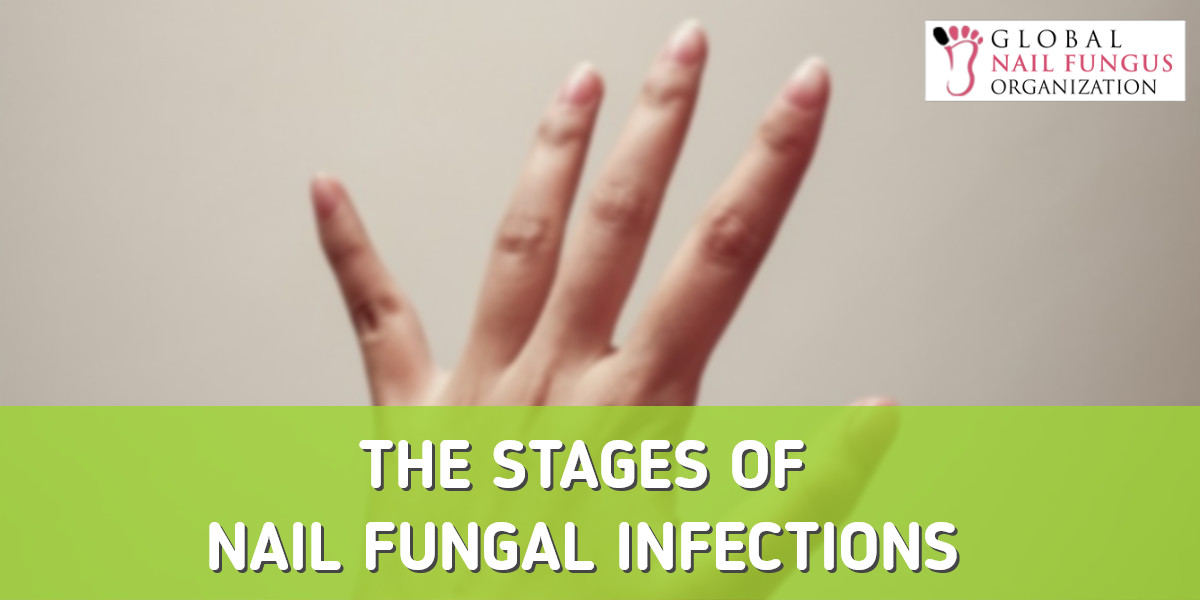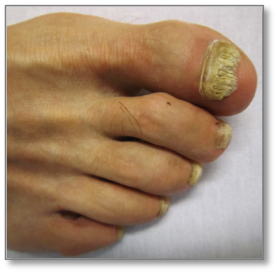 The Stages of a Nail Fungal Infection
The Stages of a Nail Fungal Infection
How to Spot a Nail Fungal Infection
Nail fungal infection, or onychomysis, is easy to spot. However, it is also easy to be mistaken for another nail disorder. Yellow nails, brittle nails, or blackened nails don’t necessarily mean nail fungus; they may be signs of other diseases or abnormalities. So what does a nail fungus look like?
The infection starts with a fungus—most commonly dermatophytes—that infects one nail at first by getting in through the cracks of the nail. It is often painless, only making the nail look thickened and discolored. However, there are cases when the nail fungus infection can cause pain and discomfort. The nail may also begin to crumble from brittleness, or there may be white or yellow patches if the nail has been lifted from the skin underneath it (also known as the nail bed). The fungus may also spread to and infect other nails.
As some of these symptoms can also be found in other nail and skin conditions, it’s recommended that the nail is assessed by a doctor. Proper diagnosis of the condition can mean proper treatment.

Stages of Onychomycosis
Onychomycosis, like other nail conditions, has different stages, from the early stage to advanced.
In its early stages, nail fungus infection is only visible with a color or texture change. It may just appear as a white or yellowish dot under the nail. And because the change is only aesthetic, some people dismiss the infection as nothing more than a bother. They may not even consider it a medical condition at all, with some even concealing it with nail polish or with heavy and thick footwear, and others believing it would go away on its own soon. Some sufferers would even attribute the changes in their nails to dry skin, and so they would apply moisturizers to their nails. However, these things would actually aggravate the infection and accelerate the growth of fungus.





The early stages is the best time to start treatment before the infection aggravates. However, as many sufferers aren’t aware of their nail fungus infection at this stage, they don’t consider undergoing treatment. Without treatment, the infection will worsen.
In the next stage, the mid-level or moderate stage, the nail will thicken to the point that it may become painful for the sufferer — especially when wearing gloves, shoes, or doing activities that apply pressure to the infected part. Without treatment, the fungus will spread from one spot to the whole of the nail, or even to other nails. At this stage, the white or yellowish dot under the nail that appeared in the first stage would get bigger. It’s the fungus building up under the nail, turning the whole nail into yellowish or other odd color.




At the last and advanced stage, the fungus-infected nail will become abnormally thick and extremely brittle because of the spread of the fungus. This will cause the whole nail or part of it to detach from the nail bed. The fungus will also spread to the skin surrounding the infected nail and may even infect other nails.





Treatment of Nail Fungal Infection at Different Stages
Treatment of onychomycosis at the first stage is crucial as the infection hasn’t exacerbated yet and therefore is easier to heal. Topical treatments, such as anti-fungal creams and gels or medicated nail polish are the most commonly used at this stage. However, it is ideal to use a topically-applied medication that not only can kill the fungus, but can penetrate the nail as well.
Most topical treatments don’t work because they can’t penetrate the nail to get to the fungi. It is therefore recommended for sufferers to use a topical medication that can penetrate the nail and kill the fungus. A solution with 10% undecylenic acid, which can effectively get rid of the infection, and a penetrating agent (usually tea tree oil), is recommended.
For moderate nail fungus infection, such topical solutions can still work. However, many sufferers use that in conjunction with oral medicines. Many anti-fungal pills in the market can treat fungal nail infection, though it is still suggested to use such medicines along with topical solutions (or medicines that are applied to the skin or nail).
Unfortunately, oral medicines are also more likely to cause side effects to patients. They are also not recommended for the elderly, pregnant women, and those who have other medical conditions or ailments.
For people with advanced or severe nail fungal infection, surgical removal of the infected nail is perhaps the best choice. Removing the whole nail—or, in some cases, just part of it—also removes the fungi. This will allow the nail to grow again in healthy form, although it would take months before a new nail would start to emerge.
But again, fungi can come back, even without the nail itself. This is why it’s recommended for patients to use topical anti-fungal ointment to the nail bed and surrounding skin while waiting for the nail to grow back. Otherwise, the fungi will just return.
Conclusion
Onychomycosis is an expensive and time-consuming nail disorder to treat, especially if it reaches the severe stage. Medicines and surgery can be quite costly, but they are necessary in curing the infection. And unfortunately, the fungi that cause the infection can return.
That is why it is highly important to detect it from the earliest stage before the infection gets worse. Treating nail fungi infection at the earliest stage can prevent the condition from aggravating into a less manageable infection.
At the first symptom, it is recommended to obtain proper diagnosis from a physician so proper treatment is also given. If sufferers failed to recognize the signs of nail fungus infection at the earliest stage, they would miss the opportunity to stop it degenerate into moderate and severe cases.
If the condition is indeed diagnosed as onychomycosis, prevent it from worsening by applying safe and effective topical products, such as a solution that has 10% undecylenic acid with tea tree oil or other proven penetrating agent. Repeated use of such products can stop the growth of the fungi and kill the infection before it’s too late.










